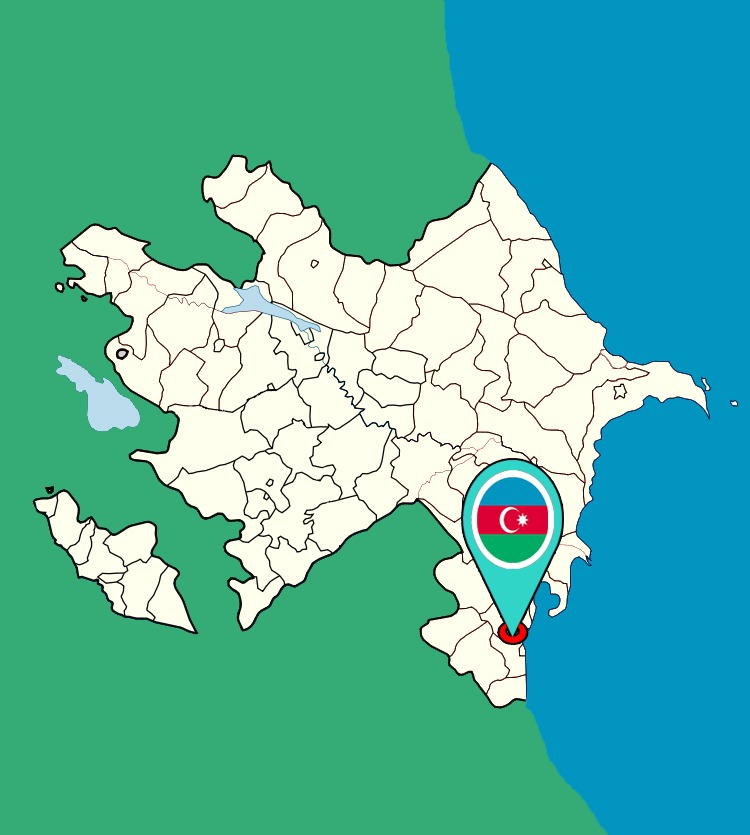Tours in Lankaran
Book now and enjoy with the best tours/excursions in Lankaran!No Trip matches your search criteira
Lankaran is a city in Azerbaijan, on the coast of the Caspian Sea, near the southern border with Iran. It is next to but independent of Lankaran rayon. The city forms a distinct first-order division of Azerbaijan. The distance from Baku to the regional center is 268 km.
The old form of the name was "Langarkanan" that in Persian means "the place of pulling up the anchor(s)" : "Langar" (Persian: anchor) + "kan" (to pull) + "an"( suffix of places). However, some sources state that Lankaran is said to come from the Talish words for 'Cane house', which sounds as 'Lan Karan'. Alternatively, from Median *Lan(a)karan-, where *karan-means 'border, region, land' and Lan is probably a name of a Caspian tribe.
The city was built on a swamp along the northern bank of the river bearing the city's name. There are remains of human settlements in the area dating back to the Neolithic period as well as ruins of fortified villages from the Bronze and Iron Ages.
With the death of Nader Shah, the Talysh Khanate was founded by a certain Seyyed Abbas, whose ancestors were members of the Iranian Safavid dynasty, and had moved into the Talish region during the 1720s during a turbulent period in Iranian history. From the founding of the khanate, until 1828, it was under the suzerainty of the Iranian Zand and Qajardynasties. In the first half of the 18th century, the Russians gained control over it for a few years through the Russo-Persian War of 1722-1723; in 1732 it was ceded back to Iran by the Treaty of Resht. During the Russo-Persian War of 1804-1813, General Kotlyarevsky heading the southernmost Russian contingent during the war, stormed and captured Lankaran's fortress. Following the Treaty of Gulistan of 1813, it was ceded to Russia. Qajar Iran would later retake the city during the Russo-Persian War of 1826-1828, but was forced to return it following the Treaty of Turkmenchay (1828), which saw the definite end of Persian influence in the South Caucasus.
Once absorbed into the Russian empire, it became a part of the Azerbaijan Soviet Socialist Republic after the Russian revolution in 1917, and the short time as part of the Azerbaijan Democratic Republic. In 1991, following the dissolution of the Soviet Union, it became a part of independent Azerbaijan.
There are sandy beaches near Lankaran. Thermal sulphide, chloride, sodium-calcium waters of Andjin (Upper and Lower) mineral springs are situated 12 km west of the town. Also to the west are the ruins of Ballabur castle, near the village with the same name.
The region has a vast area of national parks, where a variety of fauna and flora are preserved. Gizil-Agach State Reserve hosts over 250 kinds of plants, 30 species of fish and more than 220 kinds of birds. Lankaran is also known for Parrotia, or ironwood. It is naturally grown in the region and could be seen in Hirkan National Park. Local myth has it that it is the only wood that sinks in water, hence the name (ironwood). Historically it has been used for heating, since it burns for a long time and is not easily extinguished. The Persian leopard(Panthera pardus saxicolor) subspecies of the leopard, lives in the national park as well. In 1937, members of the Opilio lepidus species of harvestman were sighted in the area.
Dominating spheres in the economy of Lankaran are vegetable-growing, tea-growing, paddy cultivating, cattle-breeding, citrus plants, beekeeping, fishing, and grain farming. Favourable humid subtropical climate, availability of good arable land, water and sufficient labour resources of city provides a good basis for agricultural activities as well as development of agro-processing enterprises. The city is also home of Azerbaijan's first tea plant, built in 1937.
As of 2012, the city along with Baku and Ganja participated in Earth Hour movement.
Lankaran's cuisine has largely been affected by its multicultural history, hence the large variety of food originating during Talysh Khanate. Lankaran's signature cuisine includes lavangi, Lankaran kulcha, marji plov, white plov, pumpkin plov and turshu kebab.

No Trip matches your search criteira